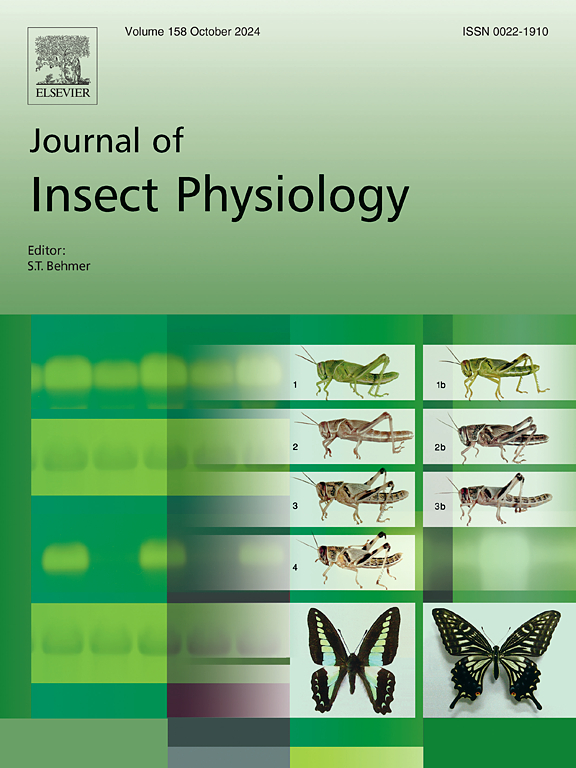Leaving the web: Testing the link between predation style and resting metabolic rate using closely related spiders with contrasting lifestyles
IF 2.3
2区 农林科学
Q1 ENTOMOLOGY
引用次数: 0
Abstract
Resting metabolic rate is influenced by numerous biotic and abiotic factors, as well as complex interactions between these factors. Behavior and lifestyle traits have significant influence on metabolic rates, but they closely interact with other influential factors, such as environmental conditions and evolutionary history. This makes distinguishing the influence of behavior and lifestyle on metabolism independent of any other factors difficult. Spiders are an ideal system for studying predation behavior, as they broadly exhibit two methods of prey capture: web-building and cursorial hunting. A spider’s web represents a large energy sink, and the loss of web-building is expected to have a significant effect on energy budget and allocation. In order to determine the influence of predation style on resting metabolic rate, we use two co-occurring, closely related clades of Hawaiian long-jawed orb weaver spiders (Tetragnatha, Tetragnathidae), one that builds webs, and one that adopts a cursorial lifestyle. Using stop-flow respirometry, we measured the resting metabolic rates of four species, two web-building and two cursorial, at 20 °C. As predicted, the cursorial Tetragnatha species have higher resting metabolic rates than the web-building species. By using this unique natural system and eliminating confounding factors, our results show that predation style has a direct influence on spider metabolism.

离开蛛网:用生活方式截然不同的近亲蜘蛛来测试捕食方式和静息代谢率之间的联系。
静息代谢率受多种生物和非生物因素的影响,以及这些因素之间复杂的相互作用。行为和生活方式特征对代谢率有显著影响,但它们与环境条件和进化史等其他影响因素密切相关。这使得区分独立于任何其他因素的行为和生活方式对新陈代谢的影响变得困难。蜘蛛是研究捕食行为的理想系统,因为它们广泛地展示了两种捕获猎物的方法:织网和游猎。蜘蛛网代表着一个巨大的能量汇,而织网的损失预计会对能量的预算和分配产生重大影响。为了确定捕食方式对静息代谢率的影响,我们使用了夏威夷长颚圆织蜘蛛(Tetragnatha, Tetragnathidae)的两个共同发生的密切相关的分支,一个是织网的,一个是采取游猎生活方式的。在20 °C下,我们使用停止流动呼吸法测量了四种物种的静息代谢率,两种是造网的,两种是游丝的。正如预测的那样,虎蛛的静息代谢率高于织网类。通过利用这一独特的自然系统并消除混杂因素,我们的研究结果表明,捕食方式对蜘蛛的代谢有直接影响。
本文章由计算机程序翻译,如有差异,请以英文原文为准。
求助全文
约1分钟内获得全文
求助全文
来源期刊

Journal of insect physiology
生物-昆虫学
CiteScore
4.50
自引率
4.50%
发文量
77
审稿时长
57 days
期刊介绍:
All aspects of insect physiology are published in this journal which will also accept papers on the physiology of other arthropods, if the referees consider the work to be of general interest. The coverage includes endocrinology (in relation to moulting, reproduction and metabolism), pheromones, neurobiology (cellular, integrative and developmental), physiological pharmacology, nutrition (food selection, digestion and absorption), homeostasis, excretion, reproduction and behaviour. Papers covering functional genomics and molecular approaches to physiological problems will also be included. Communications on structure and applied entomology can be published if the subject matter has an explicit bearing on the physiology of arthropods. Review articles and novel method papers are also welcomed.
 求助内容:
求助内容: 应助结果提醒方式:
应助结果提醒方式:


